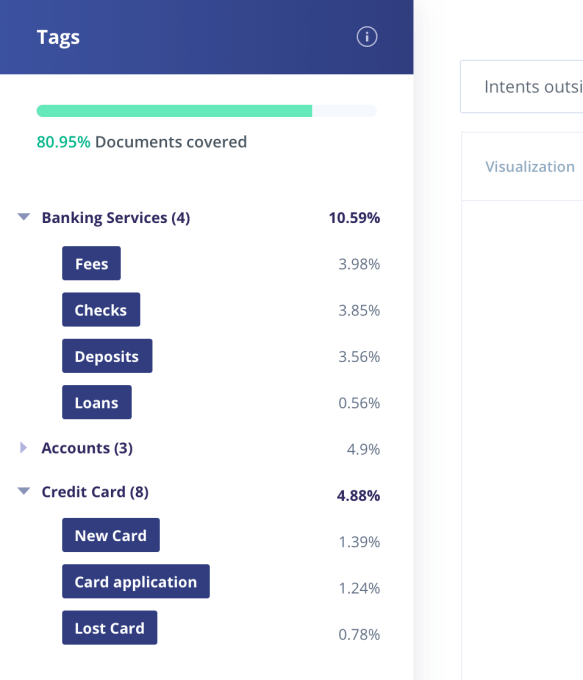The customer experience is one of the most important focus areas for businesses. According to PwC, among all customers, 73% point to experience as an important factor in their purchasing decisions, behind price and product quality. But the pandemic increased the workload of support teams, making it more difficult to hire customer service agents and keep the attrition low while maintaining a high bar for customer experience. The average contact center turnover rate is as high as 45% — at least twice that of other departments.
There is no silver bullet. But Jorge Penalva is a strong proponent of using automation technologies to help bridge the gaps in customer service. He would be — he’s the co-founder of Lang.ai, a startup developing a platform that automatically tags customer conversations to resolve service issues ostensibly more quickly. By applying intelligence to service interactions, Penalva asserts that technology like Lang’s can surface valuable insights to guide product experiences and strategies.
“Automation in customer support is not new. As companies grow larger, a common approach is deploying automation via self-service chatbots to grow more efficiently and deflect customer inquiries. Ultimately, the goal of Lang is to be a core layer of the customer experience stack that enables teams to build automations and extract better insights by structuring qualitative data,” Penalva told TechCrunch in an email interview.
Lang, which today announced that it raised $10.5 million in a Series A funding round led by Nava Ventures (bringing its total raised to $15 million), uses AI to extract concepts from customer requests in existing help desk platforms like Zendesk and Intercom. The no-code product appends incoming messages, including emails and texts, with labels like “Talk to agent,” “Delivery issue” and “Platform question.” Using Lang, companies can visually group concepts identified in customer support data and set up automations that trigger with specific labels (e.g. respond to questions about package deliveries with boilerplate text).

Image Credits: Lang.ai
Penalva said that he and his co-founders, Borja González and Enrique Fueyo Ramírez, came up with the idea for Lang while working together at a previous startup, Sentisis, a natural language processing platform for Spanish. There, Penalva said they saw business teams were unable to leverage customer service data without the expertise of their data science departments, which had higher-priority work on their plates.
“We realized that we had to think about the problem in a completely different way, not by applying current AI models (built for, and by, engineers) and simplifying them for business users, but instead by creating a no-code platform intended, from its inception, for business users,” Penalva said. “It’s not just the technology or just the user experience. Both are equally important and that was our ‘aha!’ moment.”
Lang isn’t alone in using AI to auto-tag customer service messages. Platforms like Levity.ai and Chatdesk also auto-label incoming service requests, including emails and texts. But Penalva believes that Lang is differentiated both by its technology and go-to-market approach. For example, he said, Lang uses AI systems tailored for particular customers’ domains (e.g. retail, food services, healthcare) to recognize industry jargon and adapt to changes like emerging customer support issues. The startup partners with vendors developing frontend and backend customer service automation products, such as business intelligence tools, to sell Lang as a complementary offering.
“In making unstructured data usable by tagging it, Lang becomes a data platform that can be leveraged for automations, chatbot workflows and machine learning. [Moreover, the platform] becomes the system of record for all insights across unstructured customer experience data, providing a centralized source for insights across disparate sources,” Penalva said. “To date, our biggest competition for budget share has not been other platforms but rather displacing the status quo: the hiring or outsourcing of more customer experience agents.”
It’s early days for Lang, but the company counts Stitch Fix, Ramp, Hippo Insurance and Freshly among its customers. Annual recurring revenue — Penalva declined to reveal — grew 11x in the last five quarters preceding the Series A.
With the proceeds from the latest round (which also saw participation from Oceans Ventures, Forum and Flexport Fund), Penalva said that 25-employee Lang will invest in R&D and its go-to-market teams. On the subject of the former, Penalva says that Lang will work to identify ways to connect support conversations to purchase data to determine, for example, how likely someone with a certain issue will continue purchasing a product. Future versions of the Lang platform will make automation recommendations for customer service teams based on the actions agents commonly perform.
“We believe data is the most valuable asset for support and customer experience teams,” Penalva said. “By structuring data in a simple and reliable way across all of their customer interactions, our mission is to help support teams gain their seat at the leadership table, so that support is no longer viewed as a cost center but as a revenue driver.”
